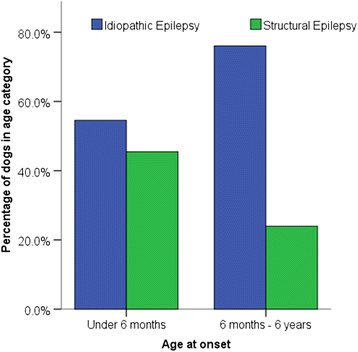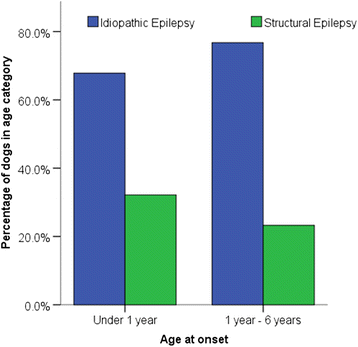International veterinary epilepsy task force consensus proposal: diagnostic approach to epilepsy in dogs
- PMID: 26316175
- PMCID: PMC4552251
- DOI: 10.1186/s12917-015-0462-1
International veterinary epilepsy task force consensus proposal: diagnostic approach to epilepsy in dogs
Abstract
This article outlines the consensus proposal on diagnosis of epilepsy in dogs by the International Veterinary Epilepsy Task Force. The aim of this consensus proposal is to improve consistency in the diagnosis of epilepsy in the clinical and research settings. The diagnostic approach to the patient presenting with a history of suspected epileptic seizures incorporates two fundamental steps: to establish if the events the animal is demonstrating truly represent epileptic seizures and if so, to identify their underlying cause. Differentiation of epileptic seizures from other non-epileptic episodic paroxysmal events can be challenging. Criteria that can be used to make this differentiation are presented in detail and discussed. Criteria for the diagnosis of idiopathic epilepsy (IE) are described in a three-tier system. Tier I confidence level for the diagnosis of IE is based on a history of two or more unprovoked epileptic seizures occurring at least 24 h apart, age at epileptic seizure onset of between six months and six years, unremarkable inter-ictal physical and neurological examination, and no significant abnormalities on minimum data base blood tests and urinalysis. Tier II confidence level for the diagnosis of IE is based on the factors listed in tier I and unremarkable fasting and post-prandial bile acids, magnetic resonance imaging (MRI) of the brain (based on an epilepsy-specific brain MRI protocol) and cerebrospinal fluid (CSF) analysis. Tier III confidence level for the diagnosis of IE is based on the factors listed in tier I and II and identification of electroencephalographic abnormalities characteristic for seizure disorders. The authors recommend performing MRI of the brain and routine CSF analysis, after exclusion of reactive seizures, in dogs with age at epileptic seizure onset <6 months or >6 years, inter-ictal neurological abnormalities consistent with intracranial neurolocalisation, status epilepticus or cluster seizure at epileptic seizure onset, or a previous presumptive diagnosis of IE and drug-resistance with a single antiepileptic drug titrated to the highest tolerable dose.This consensus article represents the basis for a more standardised diagnostic approach to the seizure patient. These recommendations will evolve over time with advances in neuroimaging, electroencephalography, and molecular genetics of canine epilepsy.
Figures
References
-
- Fisher RS, van Emde BW, Blume W, Elger C, Genton P, Lee P, Engel J., Jr Epileptic seizures and epilepsy: definitions proposed by the International League Against Epilepsy (ILAE) and the International Bureau for Epilepsy (IBE) Epilepsia. 2005;46:470–2. doi: 10.1111/j.0013-9580.2005.66104.x. - DOI - PubMed
-
- Fisher RS, Acevedo C, Arzimanoglou A, Bogacz A, Cross JH, Elger CE, Engel J, Jr, Forsgren L, French JA, Glynn M, Hesdorffer DC, Lee BI, Mathern GW, Moshé SL, Perucca E, Scheffer IE, Tomson T, Watanabe M, Wiebe S. ILAE official report: a practical clinical definition of epilepsy. Epilepsia. 2014;55:475–82. doi: 10.1111/epi.12550. - DOI - PubMed
-
- Berg AT, Berkovic SF, Brodie MJ, Buchhalter J, Cross JH, van Emde BW, Engel J, French J, Glauser TA, Mathern GW, Moshé SL, Nordli D, Plouin P, Scheffer IE. Revised terminology and concepts for organization of seizures and epilepsies: report of the ILAE Commission on Classification and Terminology, 2005-2009. Epilepsia. 2010;51:676–85. doi: 10.1111/j.1528-1167.2010.02522.x. - DOI - PubMed
MeSH terms
LinkOut - more resources
Full Text Sources
Other Literature Sources
Medical



